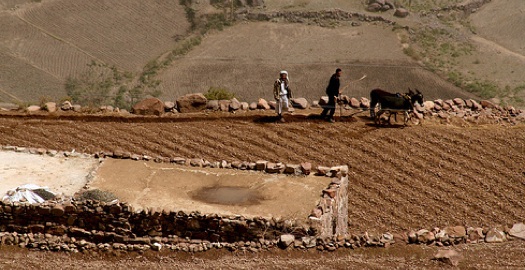Early this month in Jordan, seven Middle Eastern countries launched the Water and Livelihoods Initiative (WLI), an international conference on food security and climate change focused on the most elemental of resources: water. The 10 year project is looking at how farmers can best use their limited water resources for irrigated and rain-fed agriculture, and both native shrubs and grasses for rangeland grazing. The WLI will bring together communities from Egypt, Jordan, Lebanon, Palestine, Syria, Iraq and Yemen. Notably absent in from the list are Saudi Arabia Israel.

Why focus on efficient water use in the Middle East? Because much of the region is well below the definition of the world water poverty line, defined as 1,000 cubic meters per year of water per person. IN some Middle Eastern countries that number is just 170 cubic meters per year.
Led by Syria’s International Centre for Agriculture Research in Dry Areas (ICARDA), the project will incorporate funding and expertise from around the world, with technical support from U.S. universities with the goals of educating area farmers and making recommendations to the region’s policymakers. With a goal of raising over $50 million, the project commences with just $1 million in funding from the United States Agency for International Development (USAID).
Education efforts will teach supplemental irrigation, rainwater harvesting and how to use machinery to capture and direct rainwater. Supplemental irrigation is when farmers irrigate with just 1/3 the usual quota of water during key growth stages; this technique has been shown to increase water productivity for wheat by 150%. Results and research will be monitored on a local level across the 7 country group in order to develop best practices for water management in the region through the WLI initiative.

You must be logged in to post a comment.